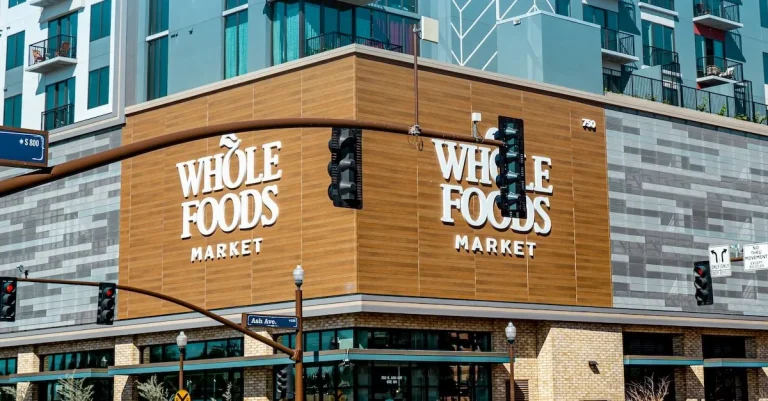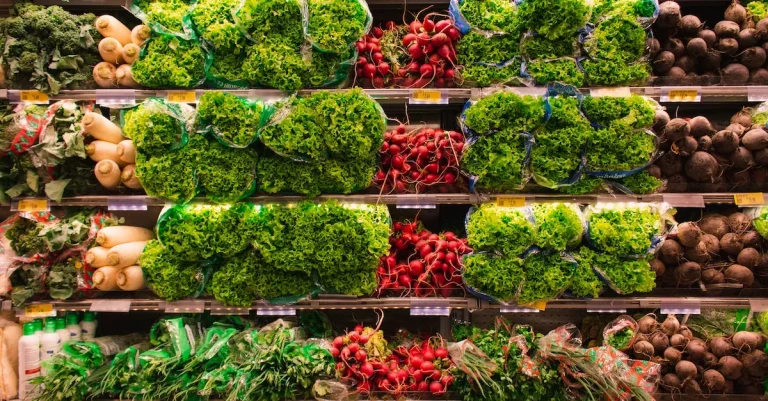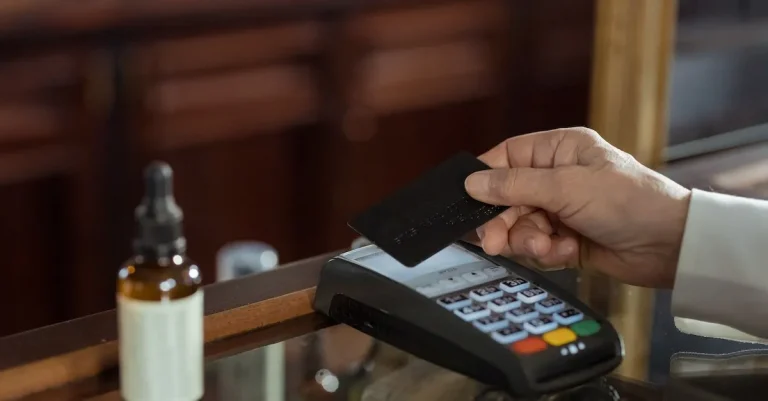Snap Vs Ebt – Understanding The Difference
The Supplemental Nutrition Assistance Program (SNAP) and Electronic Benefits Transfer (EBT) are crucial parts of the social safety net in the United States. However, the acronyms and government programs can be confusing.
If you’re short on time, here’s a quick answer: SNAP is the overall government program that provides food assistance benefits. EBT is the electronic system used to issue and redeem those SNAP benefits.
In this comprehensive guide, we’ll explain exactly what SNAP and EBT are, how they work together, who’s eligible, what you can buy with SNAP benefits, and more. You’ll learn the key differences between SNAP and EBT and walk away with a clear understanding of these programs.
SNAP Program Overview
What is SNAP?
SNAP, which stands for Supplemental Nutrition Assistance Program, is a federal assistance program in the United States that provides eligible low-income individuals and families with funds to purchase food.
The program is administered by the U.S. Department of Agriculture (USDA) and aims to alleviate hunger and improve nutrition among vulnerable populations.
SNAP Eligibility Requirements
To qualify for SNAP benefits, individuals and families must meet certain eligibility requirements. These requirements take into account factors such as income, household size, and citizenship status.
Generally, households must have a gross income at or below 130% of the federal poverty level and a net income at or below 100% of the federal poverty level.
However, there are exceptions and variations in eligibility criteria from state to state.
Additionally, individuals must be U.S. citizens or have certain immigration statuses to be eligible for SNAP benefits. Some non-citizens, such as refugees, asylees, and lawful permanent residents, may also be eligible.
How to Apply for SNAP
Applying for SNAP benefits is a straightforward process.
Individuals can typically apply online, by mail, or in person at their local SNAP office. The application requires providing personal information, such as income, expenses, and household composition.
It is important to note that the application process may vary slightly from state to state. To find specific information and resources for your state, visit the official SNAP website.
After submitting an application, it will be reviewed by the SNAP office, and if approved, benefits will be provided on an Electronic Benefit Transfer (EBT) card. This card can be used to purchase eligible food items at authorized retailers, including grocery stores, supermarkets, and farmers’ markets.
EBT Card System Overview
When it comes to government assistance programs, two commonly mentioned terms are SNAP and EBT. While they are related, they serve different purposes. This article aims to shed light on the differences between SNAP and EBT, starting with an overview of the EBT card system.
What is EBT?
EBT stands for Electronic Benefit Transfer. It is a system that allows recipients of government assistance programs to access their benefits electronically. Through the use of an EBT card, individuals and families can conveniently and securely receive and spend their benefits.
EBT cards are issued by state agencies and are similar to debit cards. They contain information about the individual’s benefits, including the amount available and the specific programs they are eligible for.
How EBT Cards Work
Once a person qualifies for a government assistance program, they will be issued an EBT card. The cardholder can then use this card to make purchases at authorized retailers, including grocery stores, supermarkets, and farmers’ markets.
When making a purchase, the cardholder simply swipes the EBT card at the point of sale device, enters their unique PIN, and the purchase amount is deducted from their available balance.
Checking Your SNAP EBT Balance
Keeping track of your SNAP EBT balance is crucial to ensure you have enough funds to cover your essential food needs.
Fortunately, there are several ways to check your balance:
- Calling the toll-free number provided on the back of your EBT card
- Logging into your state’s EBT website or online portal and checking your account online
- Using a mobile app specifically designed for EBT balance inquiries
By regularly checking your SNAP EBT balance, you can plan your grocery shopping accordingly and make informed decisions about your purchases, ensuring that you are making the most of your benefits.
Understanding the basics of the EBT card system is essential in distinguishing it from SNAP. Now that you have a clearer understanding of EBT, let’s explore the specifics of the SNAP program in the next section.
Using SNAP Benefits via EBT
Electronic Benefits Transfer (EBT) is a system that allows individuals and families to access their Supplemental Nutrition Assistance Program (SNAP) benefits. EBT cards are issued to eligible participants, and these cards can be used to purchase a variety of food items at authorized retailers.
Understanding how to use SNAP benefits via EBT is crucial for individuals who rely on this program to feed themselves and their families.
What You Can Buy with SNAP
SNAP benefits can be used to purchase a wide range of food items, including fruits, vegetables, dairy products, meat, poultry, fish, bread, and cereals. However, it is important to note that EBT cards can only be used to purchase eligible food items and non-alcoholic beverages.
Items such as alcohol, tobacco, pet food, hot foods, and prepared foods are typically not eligible for purchase using EBT benefits.
Additionally, some states have implemented programs where EBT cards can be used to access cash benefits from ATMs. This provides recipients with more flexibility in using their benefits for essential needs.
Additionally, SNAP benefits cannot be used to purchase items such as pet food or household supplies.
SNAP-eligible Food Items
When using SNAP benefits via EBT, it is essential to ensure that the items being purchased are SNAP-eligible. Most grocery stores and supermarkets have signage or labels indicating which items can be purchased with SNAP benefits.
It is also worth noting that some states have implemented programs that allow SNAP benefits to be used at farmers’ markets to purchase fresh produce and other locally sourced food items.
Using EBT at Grocery Stores
Using EBT at grocery stores is a simple process.
Once at the checkout counter, the individual or family simply presents their EBT card to the cashier. The cashier will then swipe the card and ask the customer to enter their Personal Identification Number (PIN).
Once the PIN is entered, the eligible food items will be deducted from the individual’s SNAP balance, and any remaining balance can be paid using another form of payment, such as cash or a debit card.
Online EBT Payment
In recent years, there has been a push to allow SNAP beneficiaries to use their EBT cards to make online purchases. This initiative aims to increase access to healthy food options, particularly for those who may have limited transportation or live in areas with limited access to grocery stores.
Some states have already implemented online EBT payment programs, allowing participants to order groceries online and pay using their EBT cards for home delivery or curbside pickup.
It is important to stay informed about the rules and regulations regarding the use of SNAP benefits via EBT, as these may vary by state. For more detailed information and resources, individuals can visit the official SNAP website.
SNAP and EBT Benefits
While the Supplemental Nutrition Assistance Program and Electronic Benefit Transfer are related, it’s important to understand the difference between the two.
Amount of SNAP Benefits
SNAP benefits are determined by a variety of factors, including household size, income, and expenses. Eligible individuals and families receive a monthly benefit amount loaded onto their EBT card, which can be used to purchase food items at authorized retailers.
The amount of SNAP benefits varies depending on the recipient’s circumstances, and it is adjusted annually based on the cost of living.
According to recent statistics from the U.S. Department of Agriculture (USDA), the average monthly SNAP benefit per person in 2023 was $281.00.
However, it’s important to note that this amount can vary significantly depending on factors such as income and household size.
EBT Card Security
EBT cards are used to access SNAP benefits and are similar to debit cards. These cards are protected with a PIN number, ensuring secure access to the benefits.
It’s crucial for recipients to keep their EBT cards safe and confidential to prevent unauthorized use.
Additionally, retailers authorized to accept EBT cards must adhere to strict security measures to prevent fraud and abuse. They are required to verify the identity of the cardholder and ensure that the purchases made are eligible food items.
Accessibility of Healthy Food Options
One of the primary goals of both SNAP and EBT programs is to improve access to healthy and nutritious food for low-income individuals and families. However, accessibility to healthy food options can vary depending on location.
In some areas, there may be limited availability of grocery stores or farmers’ markets that accept EBT payments. This can make it challenging for SNAP recipients to find fresh produce and other healthy food options.
However, efforts are being made to increase the number of authorized retailers that offer nutritious foods in underserved areas.
According to a study conducted by the USDA, about 90% of SNAP benefits are redeemed at supermarkets and large grocery stores, providing recipients with a wide range of food choices.
Additionally, some states have implemented programs that offer discounts or incentives for SNAP recipients who purchase fruits and vegetables.
For more information on SNAP and EBT benefits, you can visit the official USDA website. It’s important to stay informed about the eligibility criteria and guidelines to make the most of these essential assistance programs.
EBT Cards vs Debit Cards
When it comes to government assistance programs, two common forms of payment are EBT (Electronic Benefit Transfer) cards and debit cards. While they may seem similar at first glance, there are some important differences to understand.
Let’s explore the similarities and differences between EBT cards and debit cards.
Similarities and Differences
Both EBT cards and debit cards are plastic cards that can be used to make purchases. However, there are some key distinctions between the two.
Firstly, EBT cards are specifically designed for individuals and families who qualify for government assistance programs, such as the Supplemental Nutrition Assistance Program (SNAP). These cards are issued by the government and can only be used to purchase certain items, such as food and non-alcoholic beverages.
On the other hand, debit cards are typically issued by financial institutions and can be used for a wide range of purchases, including groceries, clothing, and other everyday items.
Another difference is that EBT cards are funded by government assistance programs, while debit cards are linked to an individual’s personal bank account. This means that EBT cards have spending limits based on the amount of benefits a person receives, whereas debit cards have spending limits based on the funds available in the individual’s bank account.
Additionally, EBT cards usually have specific restrictions on what can be purchased. For example, they cannot be used to buy alcohol, tobacco products, or hot prepared meals from restaurants.
Debit cards, on the other hand, typically have no such restrictions and can be used to make purchases of any kind.
EBT Spending Restrictions
One important aspect of EBT cards is the spending restrictions that are in place. These restrictions are in place to ensure that government assistance is used for its intended purpose – to provide individuals and families with access to nutritious food.
When using an EBT card, individuals cannot purchase items that are not eligible for SNAP benefits. This includes items such as hot foods, luxury foods, non-food items, and certain types of beverages.
Additionally, EBT cards cannot be used to withdraw cash, pay delivery fees, or make purchases from online retailers.
It’s worth noting that each state may have its own specific rules and regulations regarding EBT usage. Therefore, it’s important for individuals to familiarize themselves with the guidelines set by their state’s SNAP program.
For more information on EBT cards and their usage, you can visit the official website of the United States Department of Agriculture’s Food and Nutrition Service.
Conclusion
In summary, SNAP is the government assistance program, while EBT is the electronic system for distributing SNAP food benefits.
All SNAP recipients receive an EBT card loaded with their monthly allotment of funds. This allows them to conveniently purchase food at authorized retailers.
Understanding the difference between SNAP and EBT helps ensure you can access and properly utilize these vital services. With this guide, you now have a full understanding of the SNAP program and EBT card system.











